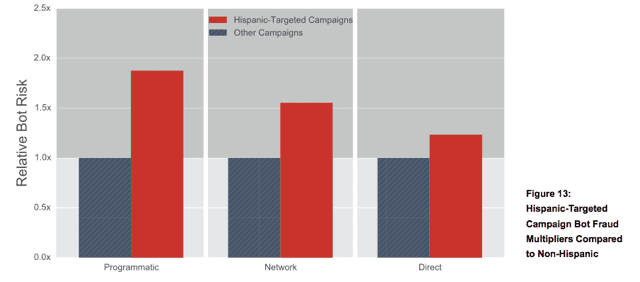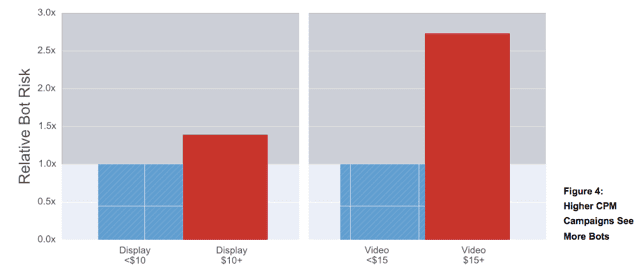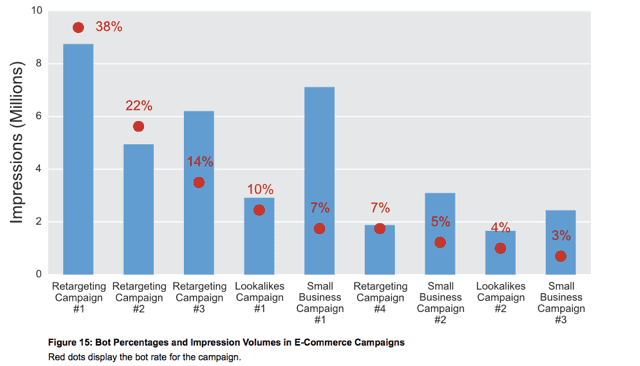Examining the Ad Fraud Marketplace
Hispanic voters’ use of mobile devices for reading political news makes them an ideal audience for campaigns to reach through digital advertising. But when there’s an in-demand audience, there’s an increased risk of ad fraud.
The trouble is that an increased demand for a specific audience or media type isn’t usually accompanied by a true growth of supply. For instance, when publishers are requested to fill pre-roll video ad buys targeting Hispanics at a much higher demand (without a parallel increase in traffic).
So how do they keep up supply? Bots.
Taking it a step further, if there are only 260,896 registered Republican voters in New Hampshire and you want to reach 275,000 unique voters in the state, there’s a gap of more than 14,000 “voters.”
How is this gap filled? Bots.
How can campaigns avoid being charged for bot traffic? White Ops recently partnered with 49 ANA member brands to examine the fraud marketplace and areas that are getting infiltrated by cyber criminals the hardest. Here’s what campaigns need to know.
Hispanic Targeting Trouble
After President Obama dominated the Hispanic vote in 2012 beating Mitt Romney in this category by a margin of 71 percent to 27 percent, narrowing the gap has become crucial for Republicans. Meanwhile, maintaining this lead is important for Democrats.
With the high demand of the Hispanic audience, the sell-side players, who claim they have both the reach and audience segments will be in for increased media spending. Now, campaigns should be aware that Hispanic Targeting is two-times more vulnerable to fraud when run on programmatic exchanges, and higher bot percentages across all buy types.

Be Wary Of Premium Video
There’s now a tremendous strain on premium video due to the scarcity of content, which allows publishers to charge higher CPM’s. Like political advertisers, botnet operators also love premium video inventory. When botnets attack the highest priced CPM’s in their “profit window,” this allows them to collect as much money as possible from the time they infect a computer with malware to when they get caught. Video inventory with a CPM of $15-plus had a bot percentage 2.7 times higher than those with CPM’s sub $15.

Retargeting Challenges
Have you ever thought about the possibility that the coveted data segment, the user who visited your site or the on-boarded targeting list might not be human? When bots infect computers they impersonate human credentials, taking control of cookie profiles and making it impossible without sophisticated detection to tell the difference. I’ve heard that it costs more than $300 to a reach a New Hampshire voter — a number that’s so high because it doesn’t account for bots. Moreover, some advertisers lose up to 38 percent of all their retargeting impressions to fraud.

Over the next nine months, inventory will become more scarce, demand for each audience will increase and each buy made is entrenching more trust into the palm of the sell-side (with the belief they are doing “the right thing”).
Advertisers have the chance to take back the control and not risk the possibility that the upcoming election cycle will be infiltrated by cyber criminals. Monitoring firms give political advertisers the unique ability to track each impression they run, with a definitive decision of bot versus human, and in-turn prevent hard earned campaign dollars ending up in the wrong hands.
Now, October has been designated as National Cyber Security Awareness Month. Coincidentally, the same month will see a blitz of digital advertising aimed at late-deciding voters. Will advertisers have a greater awareness of ad fraud next fall? They should.
Mark Schlosser is a senior director focused on political and advocacy at White Ops, which is the leading provider of cyber-security services for the detection and prevention of sophisticated bot and malware fraud @whiteops.
